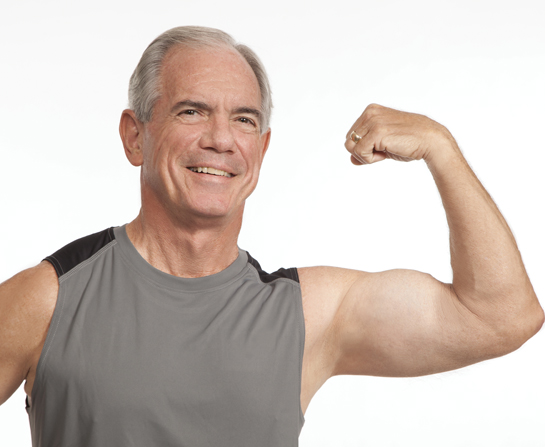5 Ways to A Fit 50s
May 3, 2022 Return

It’s easy to assume that all the changes you notice happening in your body in your 50s are due to aging. But some are not inevitable. Here are 5 things you can do to ensure you’re fighting fit in your 50s. These are the cornerstones of preserving physical health into old age.
Muscle up
Loss of muscle mass starts around age 30 and by the time the average person reaches 70, they will have lost 25% of their muscle mass. Scientists now know that not all of this loss of muscle mass that occurs as people age (known as sarcopenia) is due to the process of aging – some of it is due just to inactivity and disuse. The good news is that older adults who strength train regularly can regain a substantial amount of this loss of muscle function and strength.
Having toned muscles is not just beneficial when you want to lift a sack of potatoes. Muscles burn nearly 10 times as many calories when they’re at rest than fat. So having good muscle tone can help keep your weight in control, even when you’re resting.
Muscles also help insulin to do its job of driving sugar from the bloodstream into the cells, thus reducing the blood sugar level and avoiding the onset of type 2 diabetes and the metabolic syndrome (a group of risk factors linked with a host of diseases, such as diabetes and cardiovascular diseases).
Enhance your aerobic capacity
Aerobic capacity, which is a person’s ability to use oxygen during exercise, declines with age, even starting as early as the 2nd and 3rd decades. However, recent studies have shown that people who start with higher aerobic capacity and who maintain physical activity throughout life manage to have greater physical fitness at all points of the aging process. Very active people can have aerobic capacities that are equivalent to or better than those of less active people who are 20 years younger.
Preserving your aerobic capacity by doing regular aerobic exercise will help you as you grow older. In fact, taking part in regular training can raise your aerobic capacity by 15-25%.
Regular aerobic exercise also makes your heart work more efficiently. It can lower blood pressure, boost your immune system, reduce depression, and help you avoid stroke, diabetes, and some cancers. Moderate to vigorous aerobic exercise also improves your blood lipid profile.
Get flexible
As you age, the stiffness you feel may be due to the decrease in the water content of your tendons and the synovial fluid content of the joints. The cartilage degenerates and ligaments shorten and lose some flexibility. However, even in the young, inactivity results in stiffness in joints and reduced flexibility, so it’s not all age-related.
Keeping up a regular stretching program to keep your muscles from becoming shortened will allow greater range of motion around your joints. It will also ensure that your joints are lubricated regularly, which will help the joint move more easily. Pilates and tai chi can help keep you flexible. They will also help you maintain your agility and balance, which can reduce the chance of falls later in life.
Look after your bones
Most men and women reach their peak bone mass by age 30, but loss of bone mass occurs differently between the sexes. For men, bone loss usually begins when they are in their 50s and progresses more slowly than it does in women. At ages 65 to 70, men and women tend to lose bone at the same rate.
For women, bone mass stays level after age 30 until menopause, when bone is lost rapidly due to the sharp decline in the amount of the hormone oestrogen. Oestrogen is responsible for keeping a balance between new bone being formed and existing bone being broken down. With the loss of oestrogen, rates of bone breakdown after menopause escalate to an estimated 2 to 3% per year.
Taking calcium will slow the rate of bone loss in postmenopausal women, though evidence for increased calcium in older men is not strong. Vitamin D will help your body absorb calcium from food. Your body cannot normally obtain adequate vitamin D from food and needs sunlight or supplements to make sufficient amounts. To further strengthen bones, limit alcohol, don’t smoke and exercise!
Boost your immune system
Doctors believe that the immune system declines in function as people grow older. Specific nutrients that are important in maintaining the immune system can be found in vitamin C, vitamin B, zinc and protein. Eating a balanced diet and even eating more of some of these nutrients than is recommended for average intakes may help prevent some of the age-related loss of immune function.
However, consult your doctor if you are considering taking more than the recommended dose of vitamins or minerals to avoid possible side effects. As you enter your 50s, your sense of smell will start to deteriorate and this may account for people tending to eat less as they grow older. They use of herbs and spices may make food more appealing and improve its nutritional quality.
Lastly, regular moderate exercise boosts the circulation which brings oxygen and nutrients to the organs and cells of the immune system and allows them to function more effectively.

If you like this article, do subscribe here.
